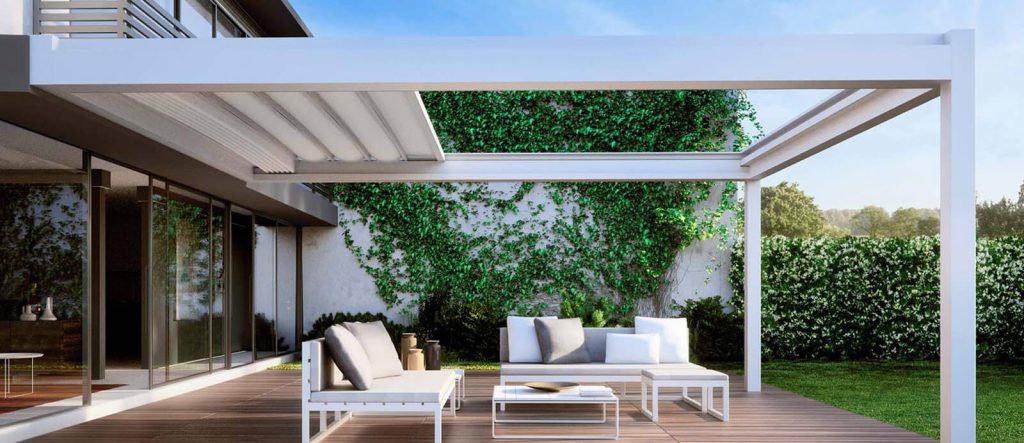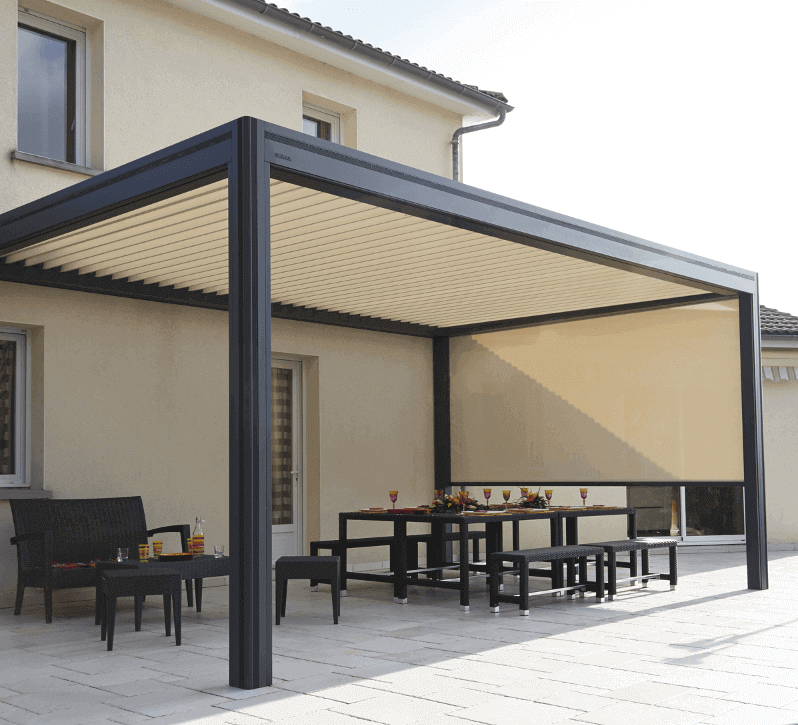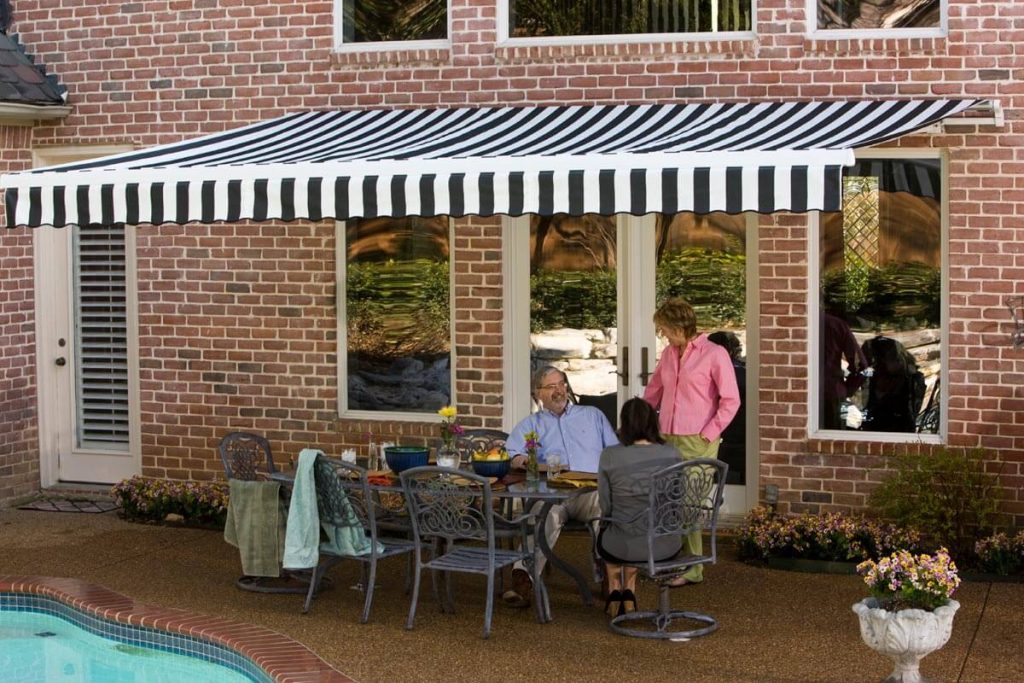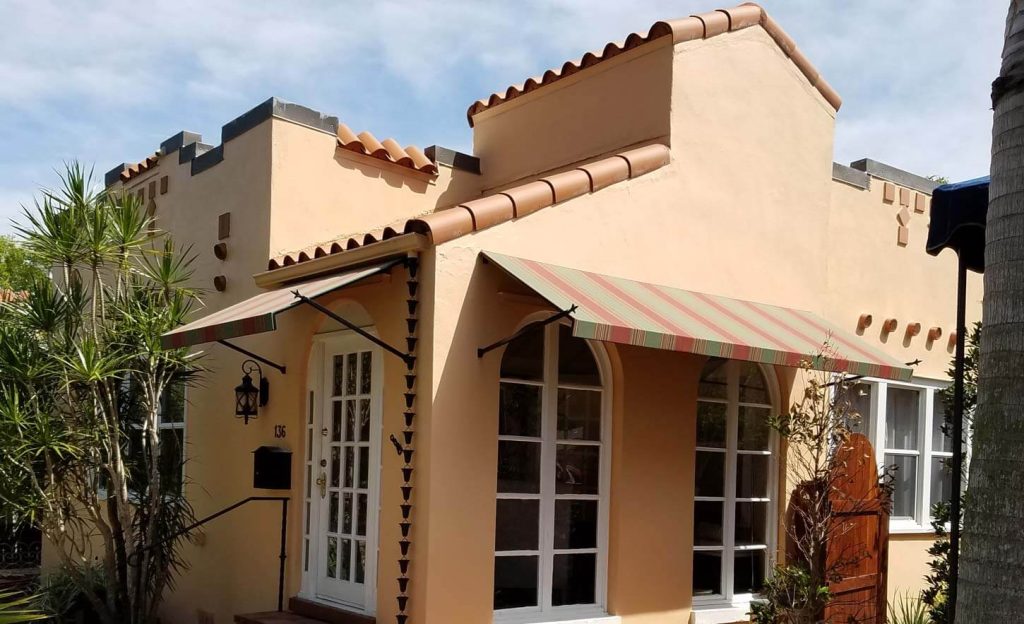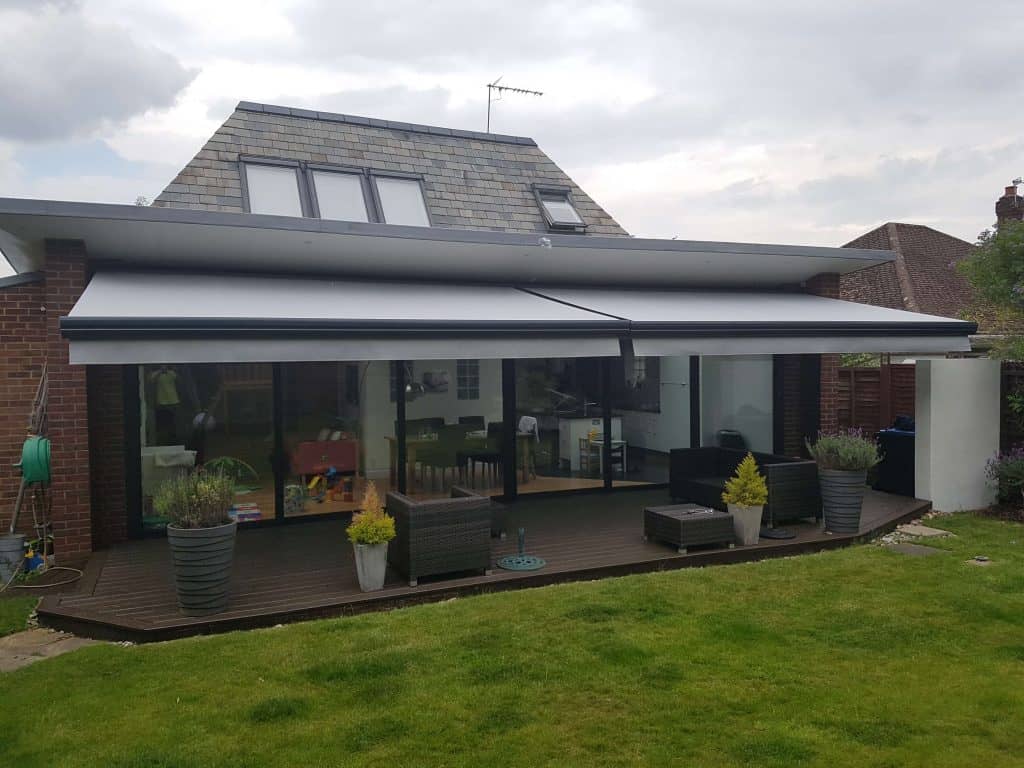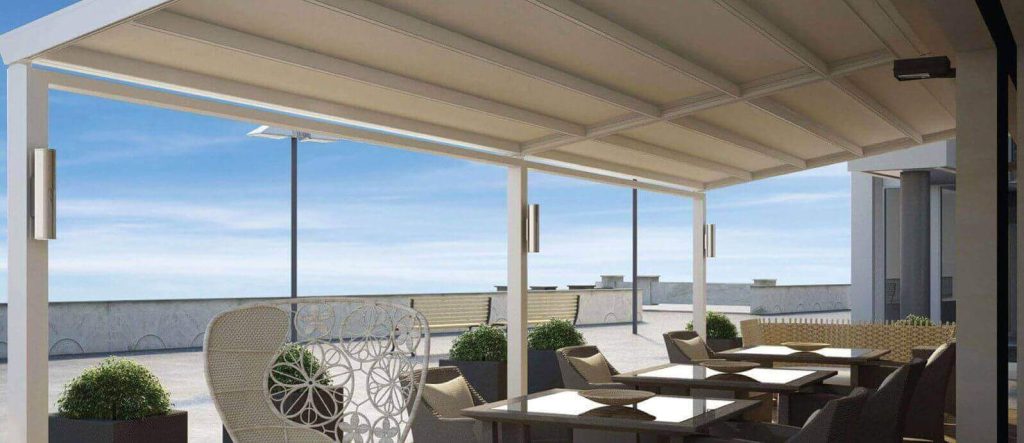Trying to weigh up a fixed vs. retractable awning? Before that, let’s take a minute to appreciate awnings in general. They’re useful, effective, and not only add to practicality but also aesthetic appeal. Homes that have awnings installed somehow look more put-together, and instantly stand out. And though you may be wondering how on earth some people are so organised, allow us to say that the process is super simple.
The first order of business is to of course figure out which type of awning is right for you. At first glance they all seem to do the same thing, but you’ll see on closer inspection that they don’t. For this reason, it pays to do your research and spend some time understanding the features of each type. You can then assess the pros and cons of each against each other, before landing on the final choice. Go a step further and look into the benefits of window awnings for your home while you’re at it too.
Here we’ll be looking at two broader types, namely fixed and retractable awnings. While they essentially serve the same purpose, there are traits that set them apart. We break down every detail too, so you can have a comprehensive idea of both. Let’s begin.
1. Fixed Awnings
Like their name suggests, fixed awnings are permanently attached to the property in question. This can be either residential or commercial, though they’re considered to be especially suited for businesses. The awning is bolted to the building to secure and support it, so it does need a structure of some sort backing it. Once they’re installed they can’t be taken down, unless you plan to do so for good. As they’re also set into a fixed position, they can’t be adjusted.
Fixed awnings are commonly found in use over doors, windows and entryways, as a shield against the elements. Their permanence also means consistent comfort throughout the year. Additionally, you can design the exact awning you need, whilst covering a larger area than retractable awnings.
Below, we’ll be looking at the pros and cons of a fixed vs. retractable awning.
2. Pros and Cons
Now let’s zero in and take a look at the pros and cons of fixed awnings:
PROS:
- Little maintenance
- Continuous shade
- Energy efficiency
- Durable construction that can withstand varying weather conditions
CONS:
- No flexibility
- Can be damaged during extreme weather
- Offers shade only at a specific angle
3. Retractable Awning
Retractable awnings are considered to be much more versatile. As they can be opened, closed or angled as you please, there’s a lot more flexibility allowed. And the fact that they make movement possible in the first place means that there are other benefits too. One of these advantages is longer fabric life, as the fabric can be rolled up when not in use. This protects it from climate conditions such as hail and UV damage. It’s also worth checking out a guide to types of awning materials for initial research as there are different types.
4. Pros and Cons
PROS:
- Longer fabric life
- Versatile – Can be adjusted for seasonal changes.
- Tucks away discreetly
- Energy efficiency
- Improved light control
- Manual or Motorised operation available
CONS:
- More expensive to install
- Requires regular maintenance
- Sensor repairs can be expensive
Conclusion
Seeing as how outdoor living is the ‘in’ thing these days and here to stay, an awning is an investment. The best way to decide on the right one for you, is to assess your climate and purpose of your outdoor space. Also take into consideration how light behaves there. Is there sunlight throughout the day? Then a fixed awning could be right for you. Does the light change and shift as the day gets on? Then a retractable awning would fit well. While yes it can amount to more than a fixed awning, it’s certainly cheaper than a roof. Plus, it comes with a lot more flexibility for your convenience.
Get in touch with our expert team for all your awning queries, no matter how big or small. Our experts come with decades of combined experience, and have both the theoretical and practical know-how to assist. They’ll also help you select the right colours and types of frames and fabrics for the best fit. Book a free in-home consultation for a personalised experience.





